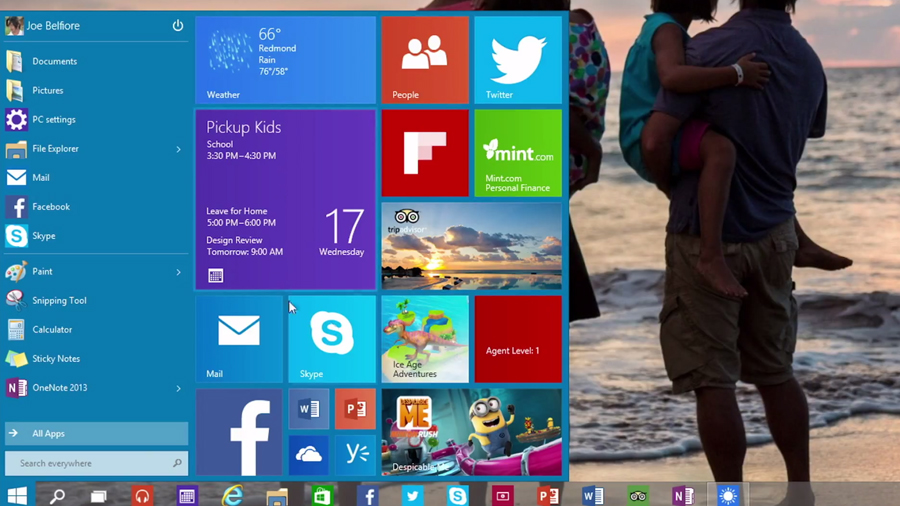Six predictions on how software licensing will impact enterprise IT
Software licensing to take centre stage in 2015

Did you know that licensing could help with security – and that app stores could be enablers for licence compliance? In this article, we're going to discuss the impact software licensing will have on enterprise IT this year, with six main predictions for 2015.
1. Licensing will become a potent security weapon helping software vendors/intelligent device manufacturers reduce hacker risk. Also, pushing software updates will be key to defending against IoT hackers
According to a recent BSA Global Software Survey, 43% of the software installed on PCs around the world, totalling more than $62 billion (around £40 billion, AU$79 billion) in value, was not properly licensed last year.
In 2015 producers will start implementing advances in tamper-resistant software licensing to reduce hacker risk and protect their intellectual property. Techniques such as tamper resistance, code obfuscation and hacker detection are a few of the licensing strategies that will be deployed to reduce software piracy.
In the context of the Internet of Things, one of the primary concerns associated with internet-connected devices is the risk from hackers exploiting vulnerabilities and using applications on device as a vector for malware. Because defending against hackers is a continuous cat-and-mouse game, once patches to hacked software are created, device makers will need the ability to automatically push those patch updates to the product to ensure installation – and ensure the manufacturer and customer are protected.
By the end of this year, more than 10% of device makers will have added automated firmware/software updates to their capabilities in order to defend against Internet of Things hackers.
2. More software renters than owners in 2015
Sign up to the TechRadar Pro newsletter to get all the top news, opinion, features and guidance your business needs to succeed!
This year, enterprises will increasingly see renting software (software subscriptions) as being advantageous over owning software (purchasing perpetual licenses). The reasons for this shift vary from organisation to organisation – ranging from the ability to shift software expenses from CAPEX to OPEX, better aligning cost to value, and reducing up-front licensing costs. But the trend is real and in 2015 the number of subscription deals will likely exceed perpetual license deals for enterprise software vendors.
3. Vendor software audits will continue unabated – adding to corporate risk
Software vendors' ability to hit their bottom-line revenue targets will continue to rely upon true-up fees extracted from customers via software license audits. Consequently, the common vendor practice of conducting these audits will continue unabated in 2015, impacting the cost and risk profile of companies of all sizes. According to a recent survey, in 2014 21% of these audits yielded fees to vendors of $1 million (around £650,000, AU$1.3 million) or more. The number of audits, and fees generated from them will continue to rise.
4. App stores will become key enablers for IT services delivery and license compliance
As organisations accelerate their adoption of enterprise app stores, the utility of these self-service stores will expand beyond that of simply providing employee access to company apps. IT will discover that app stores are an ideal environment to consolidate disparate and separately managed systems, such as mobile and desktop application management.
App stores will also be used to enable proactive license management by tying application requests into existing Software License Optimisation processes, and enabling employees to partner with IT in managing application usage, reclaiming unused applications, and minimising waste.
5. Enterprises will get "predictive" and start analysing the future impact of potential environment/licensing changes on software budgets – before those changes are made
Software license management has historically been a reactive, retrospective corporate practice. Organisations fearing software license audits (and the resulting true-up penalties) started implementing processes and technologies to understand their license position. They looked at current and past licensing positions to determine a current state.
This year, organisations with sophisticated Software License Optimisation infrastructures in place will get more proactive about license management. They will start analysing the potential impact of changes to their licensing positions or IT environments – such as virtualisation – and proactively examine the impact of those changes on software licensing costs. By getting predictive, organisations will be able to strategically manage complicated software assets, and significantly reduce costs and corporate risk in the process.
6. Mobile apps in the enterprise will become less risky
As mobile apps and bring-your-own-device (BYOD) become embedded in enterprise cultures, in 2015 IT will rein in the "wild west" risky behaviours that mobile apps introduce into the corporate environment.
IT will focus on the two big thorny questions. Firstly, how will the mobile app break the environment (i.e. identify mobile apps that display behaviours that may introduce risk to corporate security and data privacy – such as social media or GPS apps), allowing management to enact appropriate policies around those apps.
Secondly, how might the corporate environment break the mobile app (i.e. determine whether an upgrade to critical mobile software – like a stock trading app – is compatible with the enterprise environment, enabling IT to warn employees ahead of time when an upgrade will break the app).
By addressing these issues, mobile apps within the enterprise will become a far less risky proposition this year.
- Mark Bishof is President and Chief Executive Officer of Flexera Software